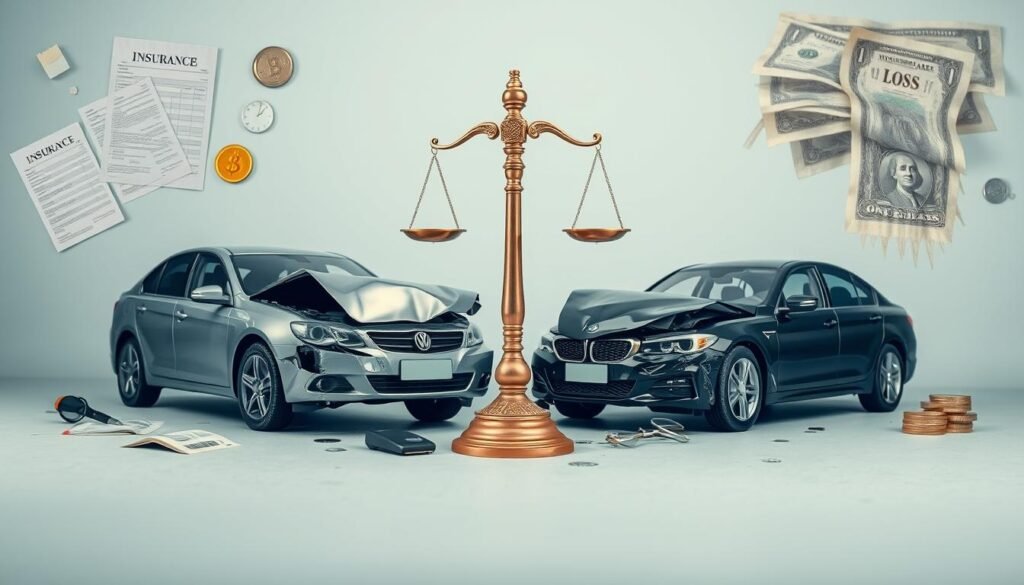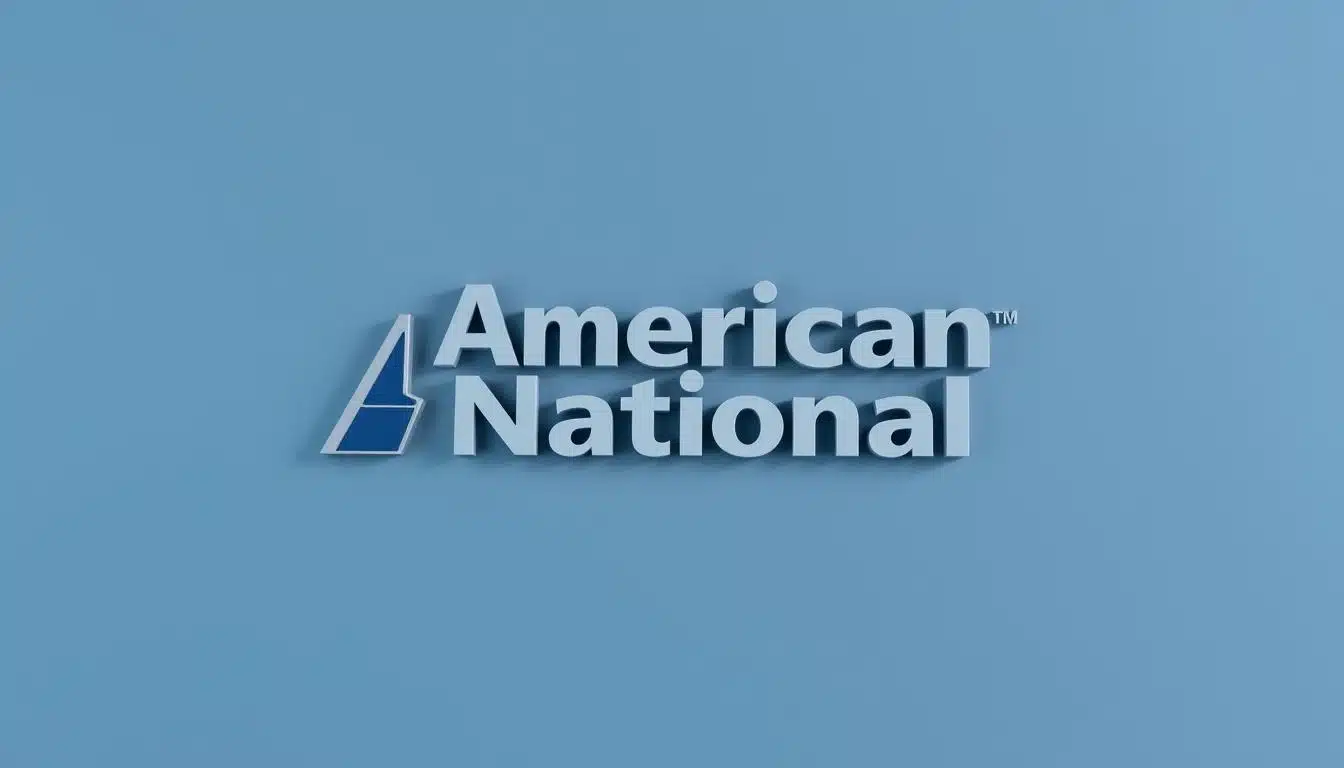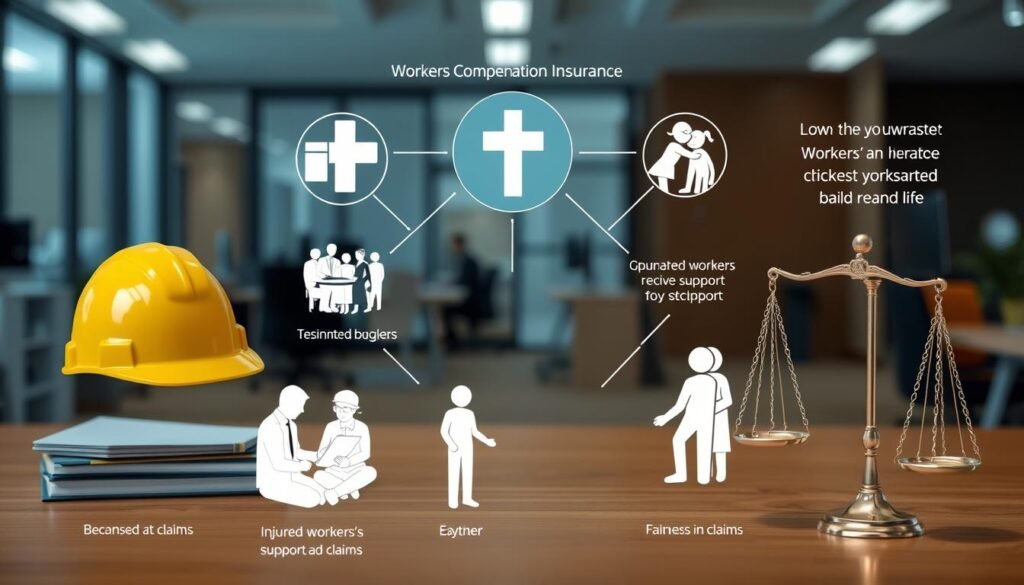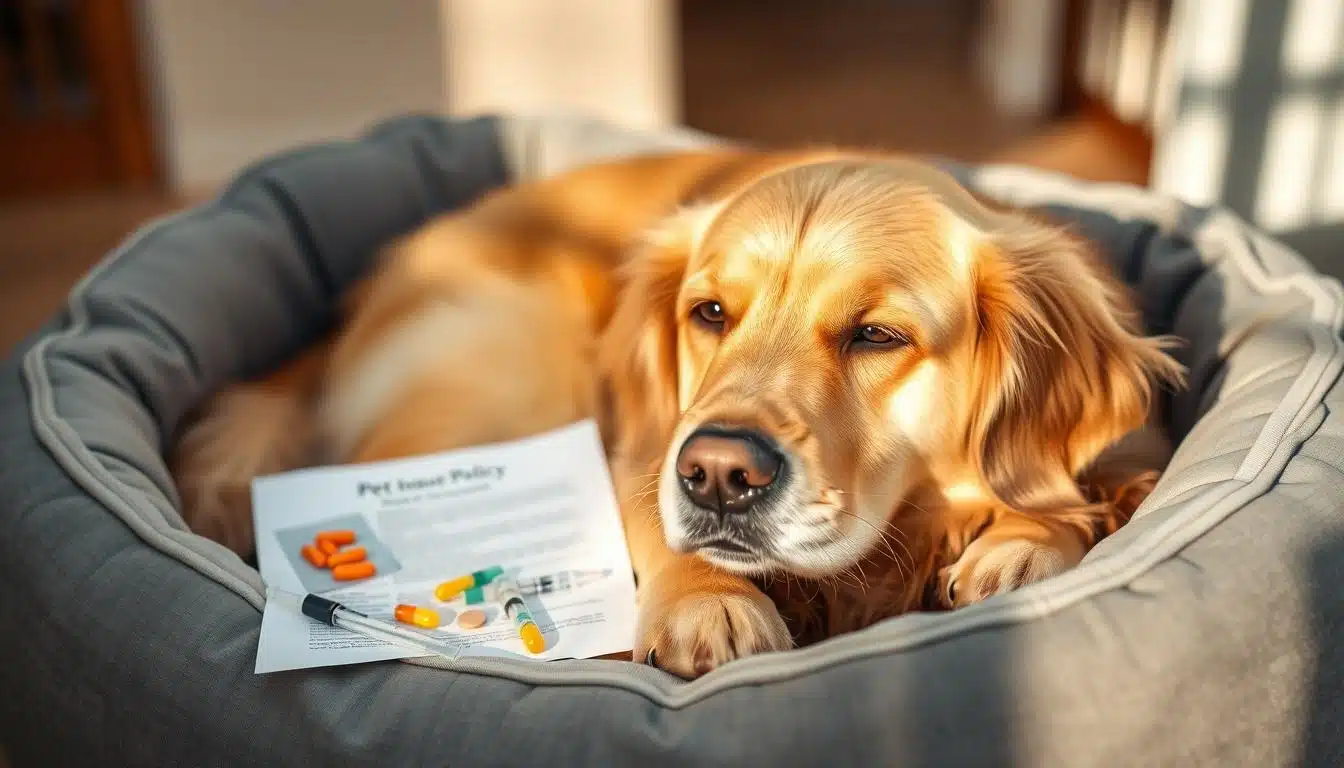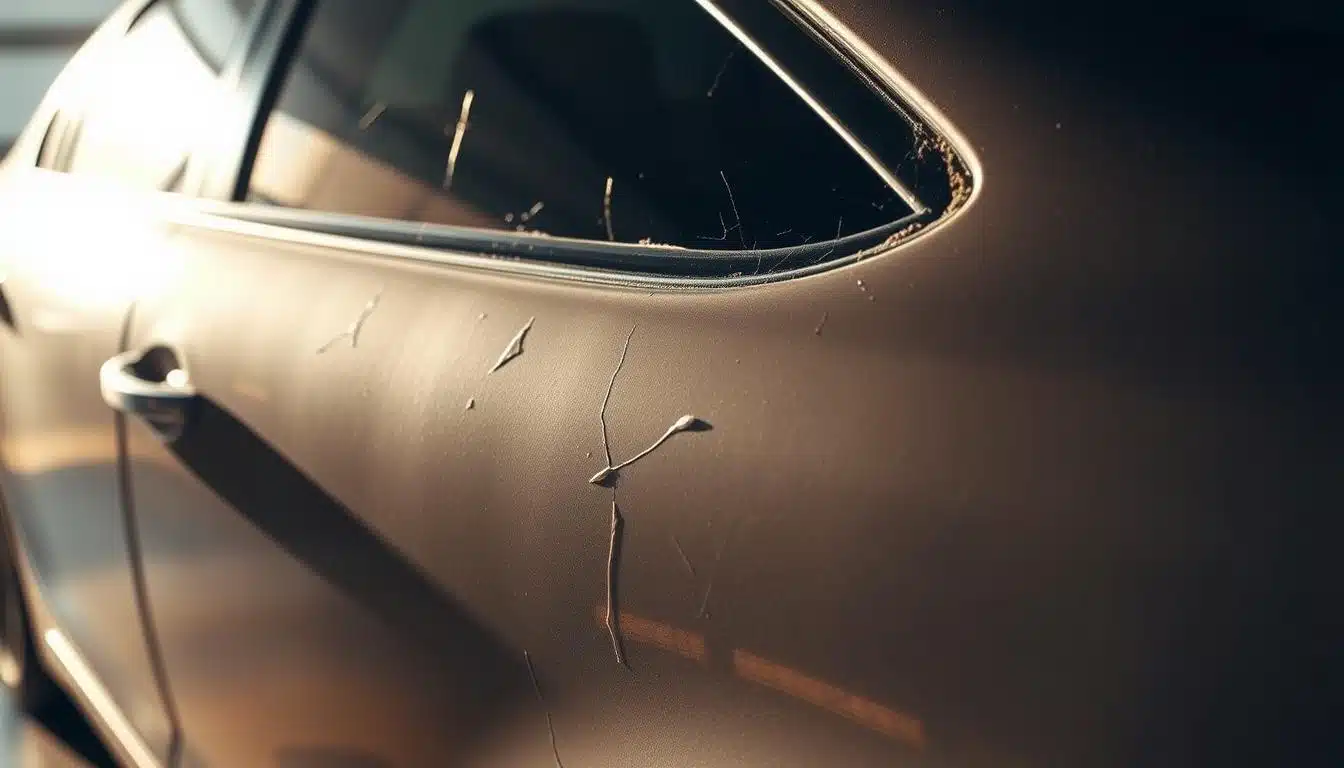Gap insurance only pays the difference between your insurer’s actual cash value payout and the remaining loan or lease balance after a total loss or theft — it does not cover repairs, routine mechanical failures, or amounts excluded by your policy. (See sources: Insurance Information Institute, NAIC, Edmunds.)
Gap insurance (also called guaranteed asset protection or GAP) is invaluable when a vehicle is declared a total loss and your auto insurance pays the car’s value — but it is not all-purpose protection. If your car is stolen or totaled, gap coverage can pay the difference between the insurance company’s ACV (actual cash value) and the loan/lease balance. However, there are specific exclusions and conditions that commonly prevent a payout. When Does Gap Insurance Not Pay? Read on for clear examples, common denial reasons, and practical steps to avoid surprises.
Table of Contents
ToggleKey Points;
- Gap insurance covers loan/lease payoff after a total loss or theft, not repair bills or medical costs.
- It generally will not cover negative equity rolled over from prior loans, optional add‑ons (extended warranties, maintenance plans), or lender fees unless your policy explicitly includes them.
- Claims can be denied for late or missed premiums, policy lapses, misrepresentation or fraud, or failure to maintain required collision/comprehensive coverage.
- Deductibles, diminished value (insurer ACV), and policy limits reduce how much gap insurance will pay.
- If you’re unsure whether you need gap insurance, ask for a written explanation from your insurer and compare quotes — borrowers with low down payments or rapidly depreciating cars usually benefit most.
Overview of Gap Insurance
Gap insurance — short for guaranteed asset protection — fills a specific hole in auto finance: when a vehicle is declared a total loss or stolen and your auto insurer pays the car’s actual cash value (ACV), gap coverage can pay the remaining loan or lease balance you still owe. It is not a replacement for standard car insurance; instead, it is designed to protect borrowers and lessees from paying out of pocket when the insurer’s ACV is less than the loan/lease payoff.
Understanding gap insurance coverage and its limits matters because new cars typically depreciate quickly — for example, many sources such as Edmunds and Kelley Blue Book note average first‑year value declines of roughly 15–25% depending on make and model — and that depreciation creates the “gap” that this protection addresses.
Importance of Understanding Coverage Limitations
GaGap insurance only covers the difference between the insurer’s ACV payment and your loan/lease balance — it doesn’t pay your collision deductible, repair bills, rental car expenses, medical bills, or other separate coverages. Rental reimbursement (a separate auto insurance add‑on) typically covers rental car fees, not gap insurance.
Should you buy gap insurance? Borrowers who usually benefit most include leaseholders, drivers who make little or no down payment, and owners of vehicles that depreciate quickly. If you have substantial equity or made a large down payment, you may not need gap coverage. Always ask your auto insurer or lender for a written estimate showing ACV vs. loan balance to decide.
State rules vary. For example, California requires that gap coverage offered at the point of sale be optional and restricts excessive charges (check the California Department of Insurance for details). For authoritative background on how gap interacts with standard car insurance and valuation methods, consult the Insurance Information Institute (III) and the National Association of Insurance Commissioners (NAIC).
Understanding Gap Insurance Coverage
What Is Gap Insurance?
Gap insurance — also known as guaranteed asset protection (GAP) — covers the shortfall between your insurer’s actual cash value (ACV) payout and the outstanding loan or lease balance when your vehicle is declared a total loss or is stolen and not recovered. In plain terms: if your auto insurance pays less than you still owe, gap coverage can pay the rest, up to your policy limits.
Gap is not required, but many lease contracts and lenders strongly recommend it. It is most useful early in a loan (or on low‑down‑payment deals) because new cars commonly lose value quickly — authoritative sources like Edmunds and Kelley Blue Book report first‑year depreciation often in the mid‑teens to low‑20s percent range depending on make/model — which creates the loan/ACV gap.
Gap insurance differs from your standard car insurance: your auto policy pays the vehicle’s ACV (what the car is worth at the time of loss); gap insurance pays the remaining loan balance (the amount you still owe) when the ACV is lower. For background on valuation and definitions, see the Insurance Information Institute (III) and NAIC guidance.
| StatisticValue | |
| Estimated share of financed vehicles with GAP (varies by source) | ~30–40% |
| Percentage of collision claims deemed total losses (industry estimate, 2023) | ~25–30% |
| Typical incremental cost for GAP when bundled with auto policy | $20–$60 per year (varies) |
| Typical standalone or dealer‑sold GAP (one‑time fee) | $200–$700 (commonly quoted range) |
These figures vary by company and state; verify current pricing with your insurer or lender. If you owe more than your car is worth — for example, after rolling over prior loan negative equity — gap coverage may still be helpful but often excludes rolled‑over amounts unless explicitly added.
Definition and Purpose
Gap insurance exists to prevent borrowers from being “upside‑down” on a car loan after a total loss. It covers the difference between the loan balance and the insurer’s ACV payout — not extras like optional warranties, maintenance plans, or lender fees unless the policy explicitly lists them. That distinction is why it’s important to compare gap coverage language across companies.
Who benefits most? Leaseholders, buyers with small down payments, and owners of vehicles that depreciate rapidly (certain luxury models, some EVs) typically need gap insurance most. If you have a sizable down payment or short loan term, the gap may be small or non‑existent..
How It Differs from Standard Insurance
Standard auto insurance protects your car’s value and covers liability. But gap insurance tackles a unique problem. It fills the gap between what you owe and youStandard auto insurance pays the actual cash value of the vehicle (what the car is worth at the time of loss). Gap insurance covers the remaining loan balance — in other words, the difference between what the insurer pays and what you still owe. Before you buy gap coverage, confirm with your insurer how they calculate ACV and whether your policy limits or exclusions could affect the gap payout.
| Standard Auto InsuranceGap Insurance | |
| Covers the actual cash value of the vehicle | Covers the difference between the loan balance and the vehicle’s value |
| Protects against liability for damages or injuries | Protects against the financial burden of a total loss |
| Applies to a wide range of vehicles and situations | Specifically designed for situations where the car’s value is less than the loan balance |
Understanding these differences and checking the policy wording with your insurer or lender will help you decide whether gap insurance is the right layer of protection for your situation.
Situations Where Gap Insurance Applies
Gap insurance (gap coverage) is intended specifically for total loss events where your auto insurance pays the vehicle’s actual cash value (ACV) but that ACV is less than your outstanding loan or lease balance. Typical qualifying events include theft (when the car isn’t recovered) and accidents where the insurer declares the vehicle a total loss. In those situations, gap coverage can pay the remaining loan/lease payoff so you don’t keep paying for a vehicle you no longer have.
Total Loss Scenarios
When your insurer declares a vehicle a total loss, it will pay the ACV (what the car is worth immediately before the loss). If that ACV is lower than the loan balance, gap insurance can cover the difference up to the policy limit. This loan/lease payoff coverage works whether you financed or leased the vehicle — but confirm whether the policy pays the lender directly or reimburses you (practices vary by company).
Accidental Damage Coverage
Important: gap insurance does not pay for repair costs when a vehicle is repairable. If your car is damaged but not totaled, use your collision or comprehensive coverage (subject to deductible) for repairs — gap coverage only applies when the vehicle qualifies as a total loss or is unrecoverable after theft.
Bodily Injuries and Medical Expenses
Gap coverage does not handle liability, medical bills, or bodily injury claims — those are covered by your liability and personal injury protection (PIP) portions of your auto policy, not by gap insurance.
When does gap insurance kick in? It generally kicks in after your primary insurer has settled the total loss claim and paid (or agreed to pay) the ACV; at that point you (or your lender) can submit the loan/lease payoff and gap claim for the remaining balance, subject to policy terms.
| CoverageIncluded in Gap InsuranceNot Included in Gap Insurance | ||
| Total Loss / Theft (vehicle not recovered) | ✔ | |
| Accident repairs (vehicle repairable) | ✔ | |
| Bodily injuries / Medical expenses | ✔ | |
| Optional add‑ons (extended warranties, service plans) | Depends on policy (usually not) | ✔ unless explicitly listed |
Mini example: If your insurer pays an ACV of $18,000 and your remaining loan balance is $22,000, the gap is $4,000. After subtracting any gap deductible or policy limits, gap insurance may pay that $4,000 (or a portion) directly to the lender to satisfy the loan balance.
When Does Gap Insurance Not Pay?
Gap insurance provides targeted protection, but it has clear exclusions. Below are the common situations—explained with practical context—where gap coverage usually will not pay.
1) Accident or damage that does not result in a total loss. Gap insurance only applies when the vehicle is declared a total loss or is unrecoverable after theft. If the car is repairable, use collision or comprehensive coverage — gap will not help with repair bills or your collision deductible.
2) Negative equity from rolled‑over prior loans. Many gap policies exclude negative equity that comes from a previous loan rolled into your current car loan. If you financed $3,000 of unpaid balance into a new loan, some policies won’t cover that rolled‑over amount unless an endorsement explicitly includes it — check your policy wording or ask the company directly.
3) Missed premiums, policy lapse, or canceled coverage. If your gap policy lapses for non‑payment or is canceled before the loss, the insurer can deny the gap claim. Grace periods vary by company and state, so maintain timely payments and keep proof of active coverage at the time of loss.
| SituationGap Insurance Coverage | |
| Accident without total loss | Not covered |
| Negative equity from previous vehicle | Not fully covered (depends on policy) |
| Missed loan/policy payments | Not eligible for coverage |
| Policy lapse or cancellation | Not eligible for coverage |
Gap insurance exclusions and denied claim reasons: insurers routinely deny gap claims for (a) fraud or material misrepresentation on the application, (b) failure to maintain required collision/comprehensive coverage, (c) claims arising from excluded uses (commercial use, racing), or (d) items not defined as part of the financed vehicle (aftermarket warranties, service contracts, or some lender fees). These are common gap insurance denied claim reasons — always read exclusions carefully.
Real‑world example (anonymized): A Texas driver assumed gap would cover a blown transmission and filed a claim after the engine failure. The claim was denied because the vehicle was not a total loss and the issue was a mechanical failure — gap only pays the loan/lease payoff after total loss, not repair costs. Another common denial: a borrower who overlooked an unpaid premium had the policy lapse; when the car was totaled days later, the gap claim was rejected due to non‑payment.
If you want to avoid a denied gap claim, jump to the “How to Avoid Gap Insurance Claim Denials” section (anchor: How to Avoid Gap Insurance Claim Denials) for practical steps.
Policy Lapses
Gap insurance can protect you after a total loss — but only if the policy is active when the loss occurs. If your gap policy lapses, is cancelled, or is not renewed, the insurer can deny a payout even if the underlying auto insurer pays the vehicle’s ACV.
Non-Renewal and Cancellation of Gap Insurance
Most gap policies include a premium payment schedule and typically offer a short grace period for missed payments (the exact period varies by company and state). If you miss payments beyond that grace period, the insurer may cancel or not renew the gap policy; when that happens, your loan/lease payoff protection ends.
If the policy is cancelled for non‑payment before the loss, the insurer can lawfully deny a gap claim. This is one of the most common gap insurance denied claim reasons: coverage not in force at the time of loss. Confirm your account status and always keep documentation proving coverage if you make changes.
Impact of Gap Insurance Policy Lapses
Without gap coverage in force, you may be responsible for the full loan or lease balance after your primary insurer pays the ACV. That could mean thousands of dollars owed out of pocket — a heavy financial burden, especially if you relied on gap to avoid negative equity after a total loss.
A lapse can also complicate future insurance shopping: an insurer may view missed payments or cancellations unfavorably and that can affect underwriting or rates. While not automatic, this is a potential indirect cost of letting coverage lapse.
| ConsequenceImpact | |
| Responsible for Loan Balance | The policyholder may have to pay the remaining loan balance out of pocket, potentially thousands of dollars. |
| Higher Insurance Rates | Insurers may view missed payments or coverage gaps as higher risk, making future coverage costlier. |
| Legal/Contract Issues | Failing to maintain required coverage (if required by lender) could trigger lender remedies; check your finance contract. |
Practical steps to avoid lapses: set up autopay for premiums, enable reminders on your phone or calendar, keep a copy of your declarations page, and confirm payment postings with the insurer. If your policy did lapse before a loss, contact the insurer immediately — you may be able to appeal, provide proof of payment, or discuss reinstatement options. If appeals fail, file a complaint with your state department of insurance (state DOI) as a next step.
Fraud or Misrepresentation
Insurers treat honesty as a condition of coverage. Gap insurance claims can be denied if you provide false information, omit material facts, or conceal the vehicle’s history. That includes failing to report prior accidents, title brands (salvage/rebuilt), or materially misstating the loan/lease balance — all of which are common gap insurance denied claim reasons. For general guidance about fraud and consumer protections, see resources such as Bankrate and your state department of insurance.
Providing False Information, Concealing Vehicle History
Deliberately omitting prior damage or lying about who uses the vehicle (personal vs. commercial) can be treated as material misrepresentation. Insurers cross‑check VIN histories (Carfax/CLUE), lender records, and repair databases; discrepancies discovered during underwriting or claims review can lead to denial and, in extreme cases, fraud investigations.
Consequences of Insurance Fraud
- Denial of gap insurance claims and possible rescission of the policy
- Potential civil or criminal penalties for insurance fraud
- Difficulty obtaining future gap or auto insurance (higher rates or declines)
- Damage to credit and reputational consequences with lenders and insurers
Real-world (anonymized) example: a buyer failed to disclose that the vehicle had previously been branded “salvage” on the title. When the car was later totaled, the insurer reviewed the VIN history and denied the gap claim for misrepresentation; the loan remained the borrower’s responsibility. Insurers frequently detect such issues via VIN checks and claims investigations.
If your gap claim is denied for suspected misrepresentation, take these steps: (1) Request a written denial and the specific reasons, (2) Provide any supporting documentation that corrects the record (repair invoices, lender statements, title documentation), (3) File an internal appeal with the insurer, and (4) If needed, contact your state department of insurance to review the company’s handling of the claim.
“Honesty is the best policy, especially when it comes to insurance. Misrepresenting information on a gap insurance application can have serious consequences that far outweigh any potential benefits.”
Being transparent when you apply for gap coverage and when you file a claim reduces the chance of a denial. If in doubt about what to disclose, ask the insurer or your agent — full disclosure helps ensure the protection you expect is actually available when you need it most.
Negative Equity and Rolled-Over Loans
Negative equity occurs when you owe more on a car loan than the vehicle is worth. This situation commonly arises early in a loan term or when buyers roll unpaid balances from a previous vehicle into a new finance contract. Many gap policies protect the gap between the insurer’s ACV payout and your current loan balance — but they often exclude or limit coverage for negative equity that originated with a prior loan unless an endorsement specifically includes it.
Understanding how rolled‑over debt affects payouts is critical. If you rolled $3,000 of unpaid balance from an old loan into a new loan, many standard gap policies will not cover that $3,000 of prior negative equity — they only cover the difference between the new loan balance (excluding certain rolled amounts) and the ACV, subject to policy limits and any deductible.
Understanding Negative Equity and Its Impact
Negative equity is common with fast‑deprecating cars. Example: you buy a vehicle and finance $30,000; after several months the insurer values it at $25,000 (ACV) but the loan balance is $28,000 because you rolled in $3,000 from a prior loan. The raw gap between ACV and loan balance is $3,000 — but some gap policies will only consider the new loan portion and exclude the rolled‑over $3,000 unless you purchased an expanded form of gap coverage.
Because insurer practices differ, check the policy for language about “prior unpaid balances,” “rolled amounts,” or “pre‑existing negative equity.” Major insurers (Progressive, GEICO, State Farm) and dealer‑sold GAP products vary in how they treat rolled debt and maximum payout limits — verify with the company before purchase.
Scenarios Where Negative Equity Prevents Payout
- If you roll $3,000 of prior unpaid balance into a new loan and the policy excludes prior negative equity, that $3,000 will typically not be paid by gap insurance.
- If your policy has a payout cap (e.g., maximum gap coverage of $10,000) and your rolled amount plus new loan gap exceed that cap, the insurer will only pay up to the limit.
- If your lender added optional service contracts or fees to the finance amount that your gap policy excludes, those amounts may be left unpaid after ACV settlement.
Real-world rolled‑over example (anonymized): a buyer rolled $2,500 of negative equity from a trade‑in into a new loan. After a total loss, the insurer paid ACV and the gap provider denied the portion tied to the previous loan. The borrower remained responsible for the rolled $2,500. Always request a written policy interpretation from the gap company if you have rolled balances on your contract.
Alternatives and international notes: in the UK some products (return‑to‑invoice or RTI) can pay the full purchase price rather than ACV; in Canada offerings vary by province. If rolled negative equity is a concern, consider lender protection products, loan/lease payoff add‑ons that explicitly include prior balances, or negotiating a lower roll‑in at time of purchase.
“Gap insurance becomes indispensable in situations where negative equity is involved, such as when rolling over previous loans into newer ones.”
Extended Warranties and Optional Coverages
GapGap insurance protects the loan/lease payoff after a total loss, but it is a different product from extended warranties (mechanical breakdown coverage) and other optional add‑ons sold through dealers or lenders. Those products cover repairs, parts, or service plans — items gap typically excludes. Understanding how these coverages interact will prevent unpleasant surprises at claim time.
Conflicts with Other Insurance Policies
Most gap policies do not include extended warranties, maintenance plans, or dealer add‑ons in their payout calculations. If your loan or lease includes optional charges (e.g., extended service contract, GAP/EP fees, or dealer-installed accessories), verify whether those amounts are considered part of the financed balance for gap payout purposes. Often they are excluded, meaning you could still owe them after a total loss.
Gap Insurance vs Extended Warranty vs Full Coverage
Quick comparison: full auto insurance (liability, collision, comprehensive) pays ACV and covers liability/medical/repairs; extended warranties or mechanical breakdown insurance cover mechanical failures and repairs (subject to terms); gap insurance covers the loan/lease payoff difference after a total loss. They complement each other but do not substitute for one another.
| SituationCovered by Gap?Covered by Extended Warranty?Covered by Auto Insurance? | ||
| Total loss / theft | ✔ (loan/lease payoff) | ✔ (pays ACV) |
| Repair for blown engine | ✔ (if in warranty) | Sometimes (if damage from covered peril) |
| Rental car after accident | ✔ (if rental reimbursement added) | |
| Rolled‑over prior loan balance | Depends on policy (often excluded) |
Best Practices for Combining Coverages
- Ask the insurer or dealer in writing whether financed add‑ons (warranties, service contracts, dealer fees) are included in gap payout.
- Compare the total cost: dealer‑sold GAP one‑time fees vs. insurer‑bundled monthly add‑ons; standalone dealer GAP is often pricier.
- Keep extended warranty documents separate from gap policy documents; know which company to call for repairs vs. loan payoff.
- Request a sample claim scenario from the gap company showing how they calculate payout (ACV, loan balance, deductible).
Missed Payments and Fees
Keep up with gap insurance billing: missed premium payments can cause lapses and leave you without loan/lease payoff protection at the time of a total loss. Also be aware that many gap policies exclude certain loan charges (late fees, NSF fees, early termination penalties) from covered balances — those may remain your responsibility.
The Impact of Late or Missed Premium Payments
A missed gap premium can cause cancellation; if the car is then totaled, the gap claim will likely be denied because coverage was not in force. Use autopay, calendar reminders, or combine gap billing with your auto policy to minimize the risk.
The Effect of Additional Fees on Gap Insurance Coverage
If your loan includes fees added by the dealer or lender, confirm whether those fees are eligible for gap payout. Many policies specifically exclude certain administrative charges. If in doubt, request the exact list of excluded items in writing from the gap company or your lender.
If you’re comparing products, ask insurers for a written comparison and check your declarations page. If anything is unclear, contact the insurer or your state department of insurance for clarification — better to confirm before you buy than to discover a gap after a loss.
“Missed or late gap insurance payments can have a devastating impact on your coverage when you need it most. It’s essential to stay on top of your premiums to ensure your policy remains in effect.”
Routine Maintenance and Mechanical Failures
Gap insurance is designed to cover the loan/lease payoff after a total loss — it is not intended to cover routine maintenance or mechanical failures. Common mechanical problems (engine, transmission, timing belt, electrical systems) are generally considered wear and tear or mechanical breakdowns and fall under extended warranties or mechanical breakdown insurance, not gap coverage.
Distinguishing Between Accidental Damage and Mechanical Issues
Accidental damage from a covered peril (collision, theft, certain comprehensive events) can lead to a total loss — and then gap may apply. A mechanical failure (for example, a blown engine) does not by itself trigger gap unless the vehicle is ultimately declared a total loss by your auto insurer. In practice, engine failures and routine repairs are handled through warranties or out of pocket.
Examples of Non-Covered Mechanical Failures
- Blown engines
- Failed timing belts
- Transmission problems
- Electrical system failures
- Brake system malfunctions
If you need protection for mechanical failures, look into extended warranties or a mechanical breakdown policy — these cover repairs and parts subject to their own terms. Remember: gap insurance is about covering the difference between what the insurer pays (ACV) and what you owe on the loan/lease after a total loss.
Deductibles and Diminished Value
When calculating a gap payout, insurers start with the insurer’s ACV (the cash amount the auto insurer pays for the totaled car). The difference between the ACV and your loan balance is the gap amount; from that, gap policy limits and any deductible are applied. Diminished value — the reduction in a vehicle’s market worth due to damage or depreciation — affects ACV and therefore affects how much gap insurance will pay.
Calculating Net Compensation After Deductibles
Example scenario:
| ScenarioAmount | |
| Original Car Purchase Price | $30,500 |
| Down Payment | $500 |
| Loan Amount | $30,000 |
| Actual Cash Value at Time of Claim | $27,000 |
| Gap Insurance Deductible | $500 |
In this example the raw gap is $3,000 (loan $30,000 − ACV $27,000). After subtracting the $500 gap deductible, the net gap payout would be $2,500. Note that some policies apply the deductible differently or cap payouts, so always confirm with the insurer how they calculate final compensation.

Additional Situations Where Gap Insurance May Not Pay
Gap insurance is narrowly focused on covering the loan/lease payoff difference after a total loss. Beyond the common exclusions already discussed, there are other, less obvious situations where gap coverage may not pay — and those can vary by insurer and state.
Usage Restrictions and Geographical Limitations
Some gap policies contain explicit usage exclusions — for example, vehicles used for commercial delivery, ride‑sharing, or racing may be ineligible. Geographical limits can also apply (certain policies exclude coverage for losses occurring outside the U.S. or in high‑risk areas). Always check the policy’s definitions of “covered vehicle use” and territory before buying.
Age and Condition of the Vehicle
Many gap products impose age and mileage limits (for example, common thresholds are vehicles under 8–10 years old and under 80,000–100,000 miles). Insurers may also exclude vehicles with prior salvage/rebuilt titles or those in poor condition. These restrictions are insurer‑specific — check the company’s eligibility rules before purchase.
Manufacturer or Model‑Specific Exclusions
Some gap policies may exclude certain makes or models — typically those with atypical depreciation patterns, high theft rates, or unusual market values. If you own a specialty vehicle, an EV with unique depreciation, or a high‑risk model, verify acceptability with the insurer.
Understanding these limits helps you pick the right gap coverage and avoid unpleasant surprises at claim time.
How to Avoid Situations Where Gap Insurance Doesn’t Pay
Follow these practical steps to reduce the chance of a denied gap claim and ensure your gap coverage is effective when you need it most.
Thoroughly Reviewing Policy Terms and Maintaining Timely Payments
Read the fine print: confirm coverage limits, deductible, whether rolled‑over balances are excluded, age/mileage limits, and usage restrictions. Keep premiums current — set up autopay or calendar reminders so your policy does not lapse. Maintain the required underlying collision/comprehensive coverage, since gap typically requires those to be active at the time of loss.
Avoiding Misrepresentation on Applications
Provide accurate vehicle history, loan/lease details, mileage, and intended use. If you’re unsure whether to disclose something (past salvage title, major prior damage, or business use), be transparent — insurers prefer full disclosure and it reduces the risk of future denial.
Regularly Updating Coverage and Consulting Professionals
Review your gap coverage annually or when your loan/lease changes. If you add or remove financed options (extended warranties, service contracts), confirm whether the gap company will consider those amounts. When in doubt, consult your insurer, a licensed agent, or the state department of insurance for clarification.
By following these steps — read the fine print, keep payments current, be honest on applications, and confirm exclusions in writing — you significantly reduce the odds that gap insurance will not pay when you need it most. If you experience a denial you believe is incorrect, request a written explanation, gather supporting documents, appeal with the insurer, and if unresolved, contact your state DOI.
“Maintaining a comprehensive understanding of your gap insurance policy and proactively addressing any changes in your situation can go a long way in ensuring your coverage is effective when you need it most.”
Choosing the Right Gap Insurance Policy
Finding the right gap insurance can be tough. But, it’s key to get full coverage for your car. To pick the best gap insurance, consider a few important things.
Evaluating Coverage Options, Comparing Providers and Policies
First, look at your gap insurance options. Check what each provider offers, like payout limits and deductibles. Also, see if there are any exclusions. Then, compare these to find the best fit for you.
Next, compare gap insurance providers. Get quotes from several companies, including your current auto insurer. This helps you find the best rates and coverage. Always ask questions to clear up any confusing parts.
Understanding Fine Print and Exclusions, Ensuring Comprehensive Coverage Alignment
When reading the fine print of gap insurance, pay attention to details. Look for any coverage limits, like age or mileage restrictions. Also, check for any exclusions or requirements for your regular auto insurance.
To get full gap insurance coverage, make sure it matches your auto insurance needs. See how it works with your other coverages. This ensures you have the best protection for your car and finances.
By carefully looking at your options, comparing providers, and understanding the fine print, you can make a smart choice. This way, you can protect your car and financial health with the right gap insurance policy.
Navigating the Claims Process
If your car is totaled and you need to file a how to file a gap insurance claim, know the steps. You’ll need to gather important required documentation for gap insurance claims. This includes the police report and loan/lease info. Also, be ready for any common challenges with gap insurance claims and how to overcome them.
Steps to File a Gap Insurance Claim
- Get the needed documents like the police report and your loan or lease agreement.
- Call your gap insurance provider right away to start the claims process.
- Give the insurance company all the info and documents they ask for.
- Be ready to answer their questions and provide more info if needed.
- Keep in touch with the insurance company to make sure your claim is moving forward.
Required Documentation and Evidence
When you file a gap insurance claim, you’ll need to provide certain documents:
- A police report about the accident or incident that made your car a total loss.
- Your loan or lease agreement, showing how much you still owe on your car.
- Proof that you have gap insurance, like your policy or declarations page.
- The estimated value of your car, based on industry standards or an appraisal.
Timelines and Expectations for Payouts
The time it takes for a gap insurance payout can vary. It depends on your insurance company and the claim’s details. Here’s what you can usually expect:
- A quick response from the insurance company within a few business days after you file your claim.
- A detailed review of your claim and documents, which might take a few weeks.
- The payout of the gap insurance benefit, usually within 30 days after approval.
Common Challenges with Gap Insurance Claims and How to Overcome Them
While gap insurance claims are usually easy, some challenges can come up:
- Disputes over vehicle value: If the insurance company doesn’t agree with your car’s value, be ready to show more evidence.
- Delays in processing: If your claim is taking too long, ask the insurance company for updates.
- Denials or partial payouts: If your claim is denied or you get a partial payout, understand the reasons. You might want to appeal or seek legal help.
By knowing the gap insurance claims process and tackling any challenges, you can get a successful and timely payout.
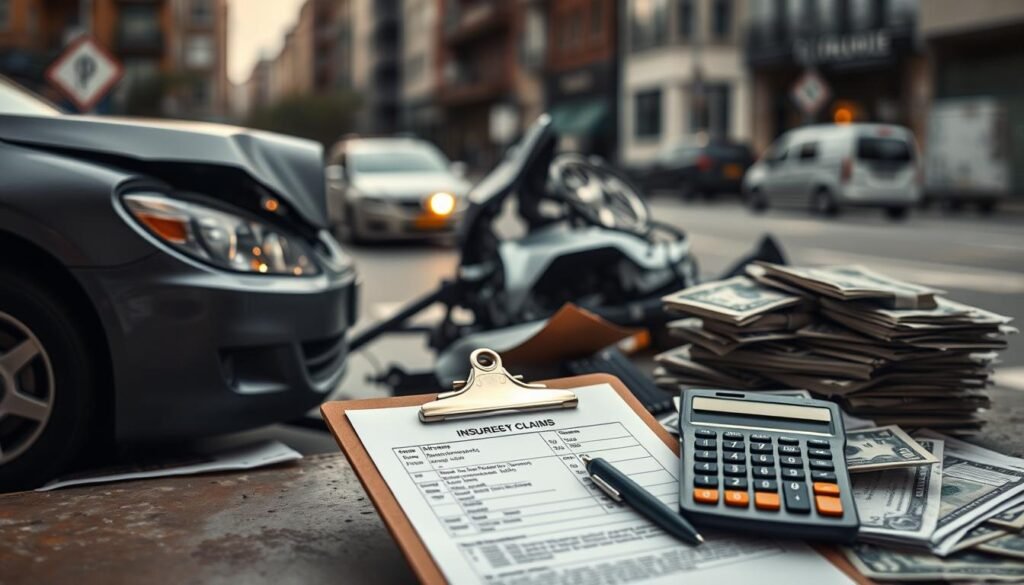
Conclusion, Recap of Key Points on When Gap Insurance Does Not Pay
Gap insurance can be very helpful if your car is totaled. But, it’s important to know when it won’t cover you. This includes accidents that don’t total your car, negative equity, missed payments, and mechanical failures.
Importance of Informed Decision-Making
Being careful and talking to insurance experts is key. Make sure you know what your policy covers and pay on time. Adding gap insurance to your financial plans can help you make smart choices about your car’s coverage.
Knowing when gap insurance won’t pay can help you avoid problems. Stay informed and make smart choices about your coverage. This way, you’ll be protected if your car is unexpectedly totaled.

